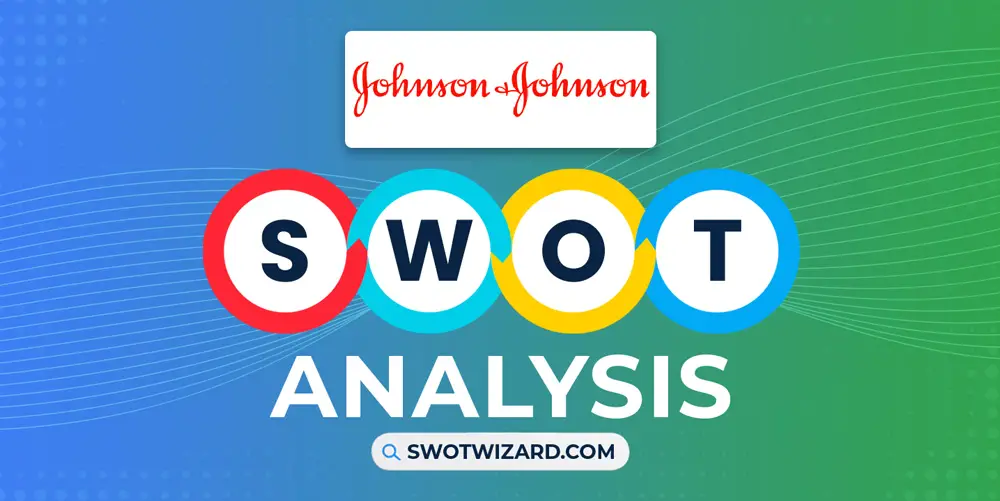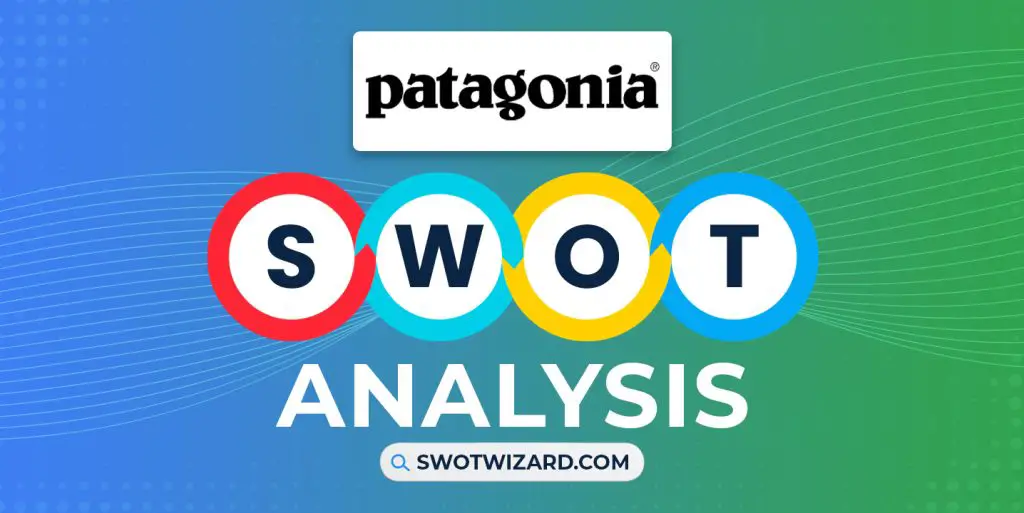UPS delivers over 20M packages daily, meaning multiple deliveries have been handled just right now. With a worldwide network, you might have seen at least one black van with a yellow-black UPS logo. That being said, UPS has a long history of struggles and grabbing opportunities to come this far, which we will get to know in this UPS SWOT analysis.
UPS: Company Overview
| Company | United Parcel Service (UPS) |
| Industry | Courier |
| Founded | 28 August, 1907 |
| Founder | James E. Casey |
| CEO | Carol Tomé |
| Headquarter | Sandy Springs, Georgia, U.S. |
| No. of Employees | 536,000+ |
| Annual Revenue | $100.3 billion (FY 2022) |
| Website | ups.com |
In 1907, UPS founder Jim Casey borrowed $100 to start the company, and the first package he delivered was a pair of women’s shoes to a customer in Seattle. That was the start of the UPS, which now operates a fleet of over 119,000 vehicles, including trucks, vans, and planes, and has a network of more than 5,334 retail locations in the USA alone with over 2,000 operating facilities.
UPS reported total revenues of $100.3B and employed over 536,000 people worldwide in 2022 and places a strong emphasis on technology and innovation, with ongoing efforts to streamline operations and improve the customer experience through data-driven solutions.
Product & Services of UPS
Transportation | Distribution | Ground Freight | Ocean Freight | Air Freight | Supply Chain Management | Contract Logistics | Customs Brokerage | Insurance | Financing
UPS Competitors
DHL | FedEx | Purolator | DB Schenker | TNT | YRC Worldwide | Mainfreight | USPS | Royal Mail | C H Robinson
Did You Know?
UPS Airlines operates over 275 aircraft and is the ninth-largest airline in the US by fleet size.
Strengths – UPS SWOT Analysis
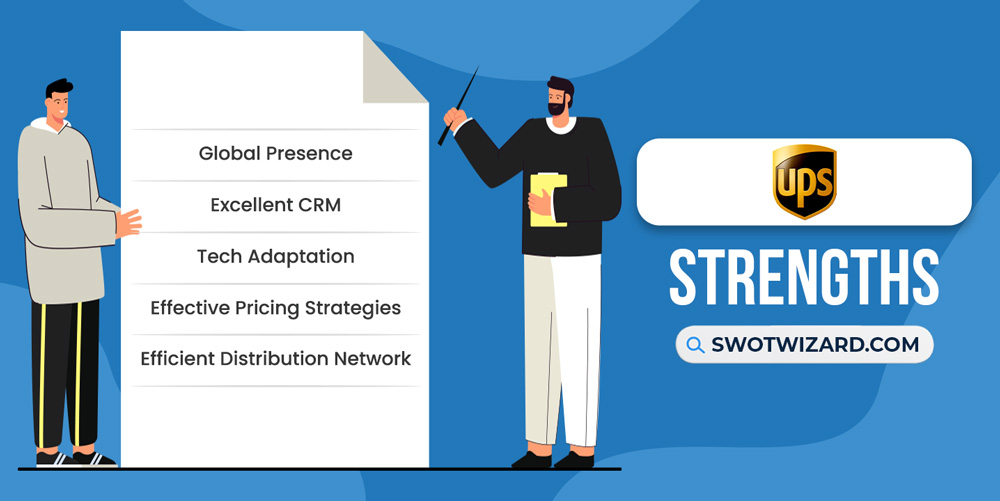
Global Presence: With operations in over 220 countries and territories worldwide, UPS operates a fleet of over 500 aircraft and 119,000 vehicles with over 32.8M square feet of warehouse space in 596 facilities. Additionally, UPS’s international presence includes its partnerships with Alibaba and its acquisition of European delivery company TNT Express.
Excellent CRM: Without excellent customer relationship management, it’s difficult for any company to make it this far. That’s why UPS has an automated system that provides personalized and efficient customer service. With data on customer preferences and buying habits, the company can tailor their services to meet individual needs, providing real-time updates and proactive communication.
Tech Adaptation: To operate efficiently and effectively and have excellent customer service, UPS uses advanced algorithms and machine learning to optimize delivery routes, reducing fuel consumption and lowering costs. Not just that, UPS reported a massive increase in revenue from its international package segment, driven in part by its advanced technology solutions.
Effective Pricing Strategies: By offering differentiated pricing based on service levels, package weight, and destination, UPS has been able to capture a range of customer segments and increase revenue. As a result, people have both options to choose an economical price package and the quickest sending option, which leads to a balanced revenue from all the packages.
Efficient Distribution Network: As mentioned, UPS has advanced tech, which has helped the system to optimize routing and automated sorting facilities. As a result, the company implemented an efficient distribution channel with a “smart label,” which reduced misroutes by 70%. At the same time, its ORION optimization system has saved the company over 100M miles in driving distance.
Weaknesses – UPS SWOT Analysis
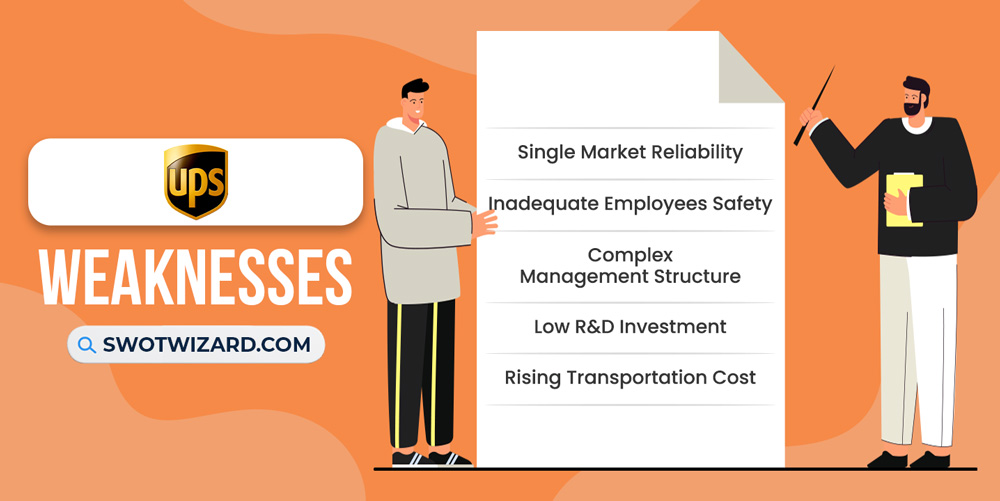
Single Market Reliability: You can’t keep all, or most of it, your eggs in one basket, and in the same way, overreliance on one market makes the company vulnerable to economic fluctuations and changes in consumer behavior within that market. The US market accounted for approximately 54% of UPS’s total revenue, making the company over-reliant on the USA.
Inadequate Employees Safety: Every company runs and depends on employees, and UPS is lacking in there. The Occupational Safety and Health Administration (OSHA) cited UPS for safety violations related to unsafe conditions, lack of training, and inadequate safety procedures. Additionally, there have been several reported incidents of UPS employees being injured or killed while on the job due to safety lapses.
Complex Management Structure: In the transportation industry, effectiveness and efficiency are the names of the game. But, with a complex organizational structure, there are multiple layers of management and a highly bureaucratic decision-making process, which slows things down. It also comes with a lack of agility and difficulties in implementing new ideas, which is inefficient for the company.
Low R&D Investment: UPS’s research and development investment has been relatively low compared to other companies in the transportation and logistics industry. UPS spent around $1.3B, 1.2% of its total revenue, on R&D in 2022, which is lower than the industry average of 3.7%.
Rising Transportation Cost: The last two years have been a rollercoaster ride for the transportation and logistics industry, and UPS has been facing rising transportation costs due to various factors, including fuel prices, labor costs, and, recently, the Russia-Ukraine war. As a result, UPS reported a 22% increase in its transportation expenses compared to the previous year.
Opportunities – UPS SWOT Analysis

Market Expansion: UPS is over-dependent on Amazon and the US market, which opens doors for the opportunity to expand and balance out the revenue portfolio. According to data, global e-commerce sales are expected to reach $8.1T by 2026, a 23.3% overall increase. The company already started working on that as UPS has expanded its presence in emerging markets, such as India and China, where e-commerce is experiencing explosive growth.
Offerings Diversification: The company has diversified its offerings beyond package delivery to capitalize on future growth opportunities. UPS has expanded its healthcare logistics services, focusing on temperature-sensitive shipments, and entered the drone delivery market.
Strategic Merger & Acquisitions: One of the ways to expand to new markets and find opportunities is to actively pursue strategic mergers and acquisitions to expand its global presence and capabilities. And as a part of the plan, the company recently acquired an Atlanta startup Roadie, which connects shippers with local same-day delivery drivers.
Air Tech: The company sees significant opportunities in the fast-growing e-commerce market, where faster and more efficient delivery is becoming increasingly important, and air delivery and techs are the way to do it. UPS has been investing in air techs and experimenting with air delivery techs, especially drone delivery systems.
Expand Service Days: After covid, the system has changed a lot, and in the new normal, we want everything to be more flexible. But, UPS’s traditional way of delivering goods on weekdays has contained the company to its limits, and UPS has the opportunity to expand its business days to seven days.
Threats – UPS SWOT Analysis
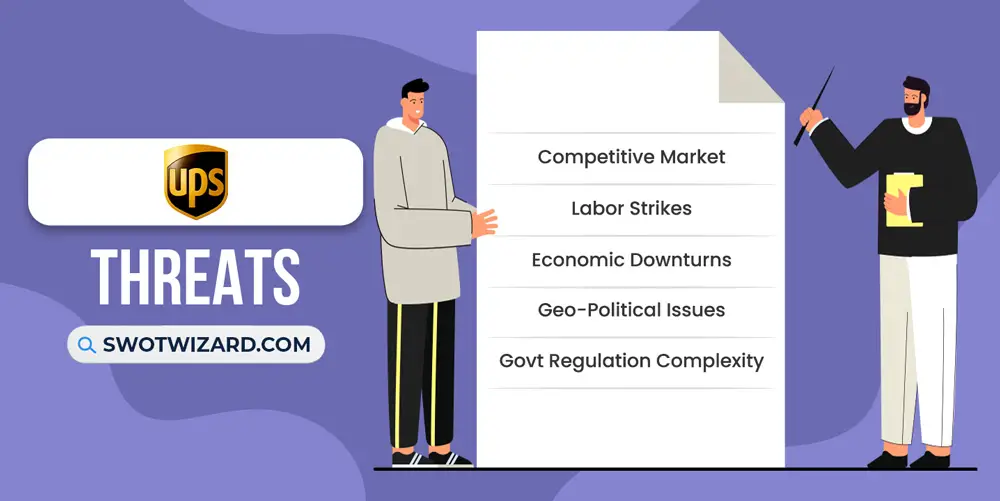
Competitive Market: After covid, the global online sales market has grown by a massive margin, and to capture that market as quickly as possible, local and international services have invested a lot, and the market has become more competitive. As a result, even though UPS is still the market leader in the USA, DHL is still the market leader with a 38% share globally.
Labor Strikes: Regarding efficiency, workers hold the cards, and labor strikes can be an issue. And UPS has experienced several labor strikes throughout its history, including the 2018 strike, where 260,000 UPS workers protested against proposed changes to their healthcare plans and working conditions, which cost the company nearly $650M. And, recently, in 2023, another biggest strike of the year has been going on.
Economic Downturns: During the Great Recession of 2008-2009, UPS saw a decline in package volume and revenue, leading to layoffs and cost-cutting measures. With the threat of a rising recession in 2023, UPS is having another bad year with everything going on that poses a significant threat to the company.
Geo-Political Issues: With war, regulations, and other issues, international companies are caught in the middle, and UPS has faced several geopolitical problems in its global operations. Trade tensions between the US and China have disrupted cross-border shipments have always been an issue, and after that Russia-Ukraine war has burned up the fuel.
Govt Regulation Complexity: As an international company, UPS faces regulatory challenges in the global markets, where it must comply with various customs and trade laws. These regulations can be complex and costly, with UPS spending over $68M on lobbying efforts in the US alone in the last decade, not to mention billions in other countries.
[Bonus Infographic] SWOT Analysis of UPS
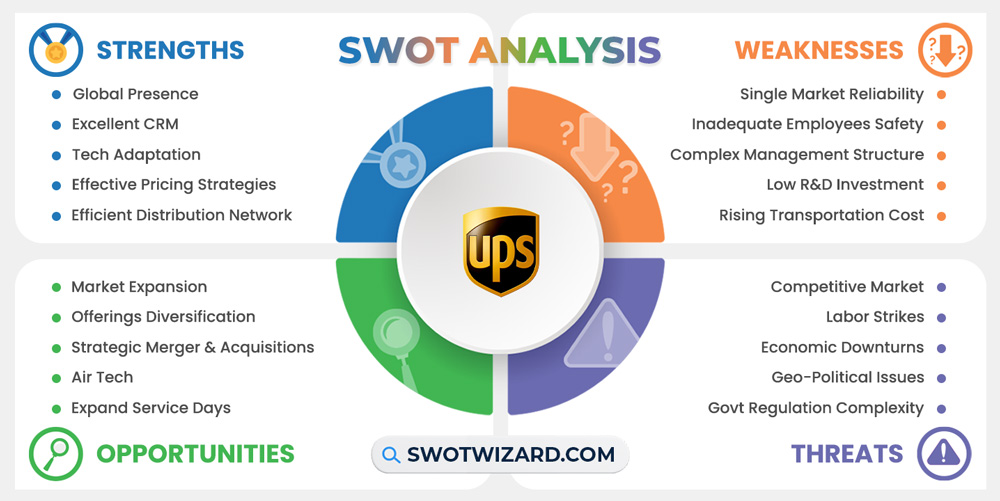
Recommendations for UPS
With over a hundred years of history, UPS has a lot of experience in the industry, not to mention being one of the oldest companies in the sector. But, as time changes, companies need to change too.
- As the logistics industry becomes increasingly digital, UPS should continue to invest in technological innovation.
- To reduce costs and improve its competitiveness, UPS should look for ways to streamline its operations, such as optimizing its route planning and inventory management.
- Strategic acquisitions can help the company to reach more customer base and increase efficiency in its operational activities.
- With more tech and demand, offering more diversified options with more flexible working days will increase the revenue.
- Given the complex and the evolving regulatory landscape, UPS should stay abreast of any regulatory changes that could impact its operations and profitability.
Frequently Asked Questions (FAQs)
How Fast Does UPS Ship?
UPS’s average shipment span is between two to five business days.
Who Is UPS’s Largest Customer?
Amazon is UPS's largest customer, with over $200B worth of sales yearly.
Final Words on UPS SWOT Analysis
UPS is a global logistics company with a strong reputation for reliability and efficiency in the package delivery industry. However, the company also faces complex regulatory challenges, labor strikes, geo-political issues, etc. UPS can continue to innovate and thrive in a rapidly changing industry, focusing on diversifying offerings, expanding to new markets, e-commerce services, streamlined operations, and strategic acquisitions.
References
- Wikipedia contributors. (n.d.). UPS. Wikipedia.
- UPS Telematics Helps Shave Fleet Fuel Costs. (2020, May 17). Supply Chain Digital.
- Picciotto, R. (2023, January 31). UPS revenue falls short of expectations despite growth in U.S. business. CNBC.
- Why Amazon, UPS and even Domino’s is investing in drone delivery services. (2023). Insider Intelligence.
- Gibson, K. (2018, June 7). Teamsters: 260,000 UPS workers ready to strike for better contract. CBS News.
- Isidore, C. (2022, September 6). One of the biggest strikes in US history is brewing at UPS. CNN.



